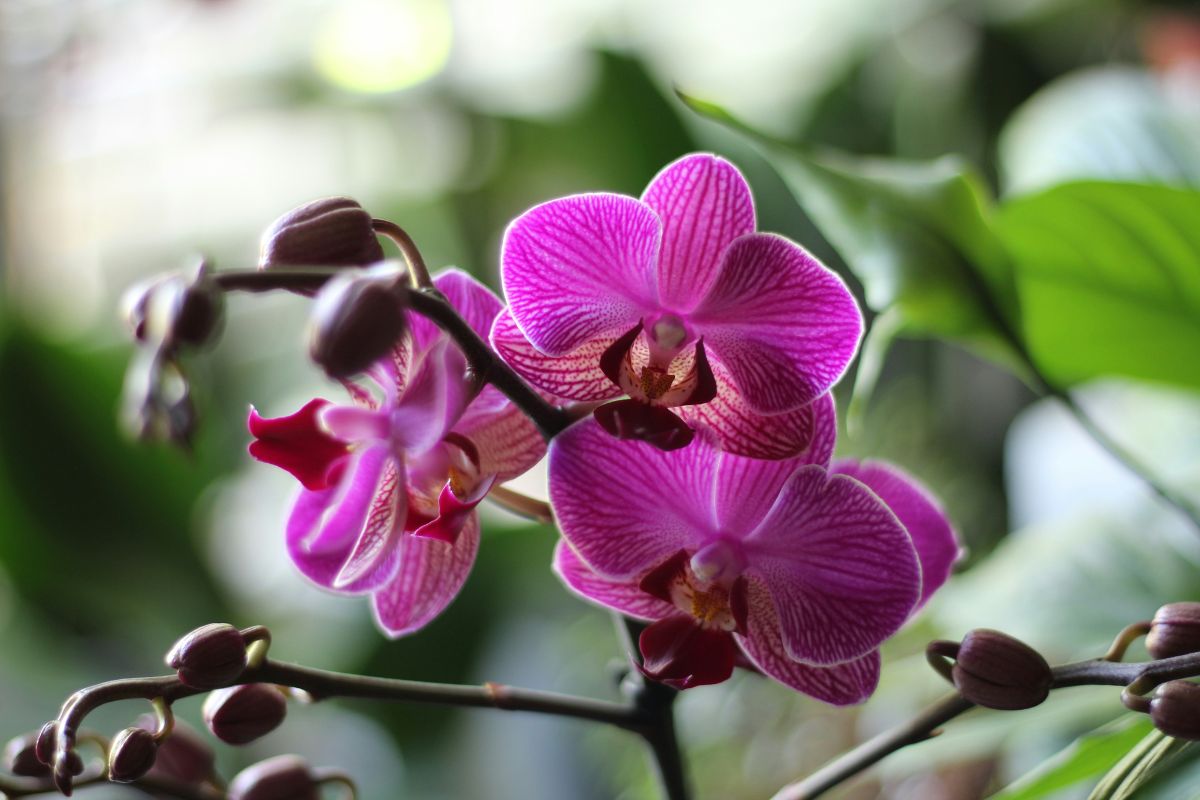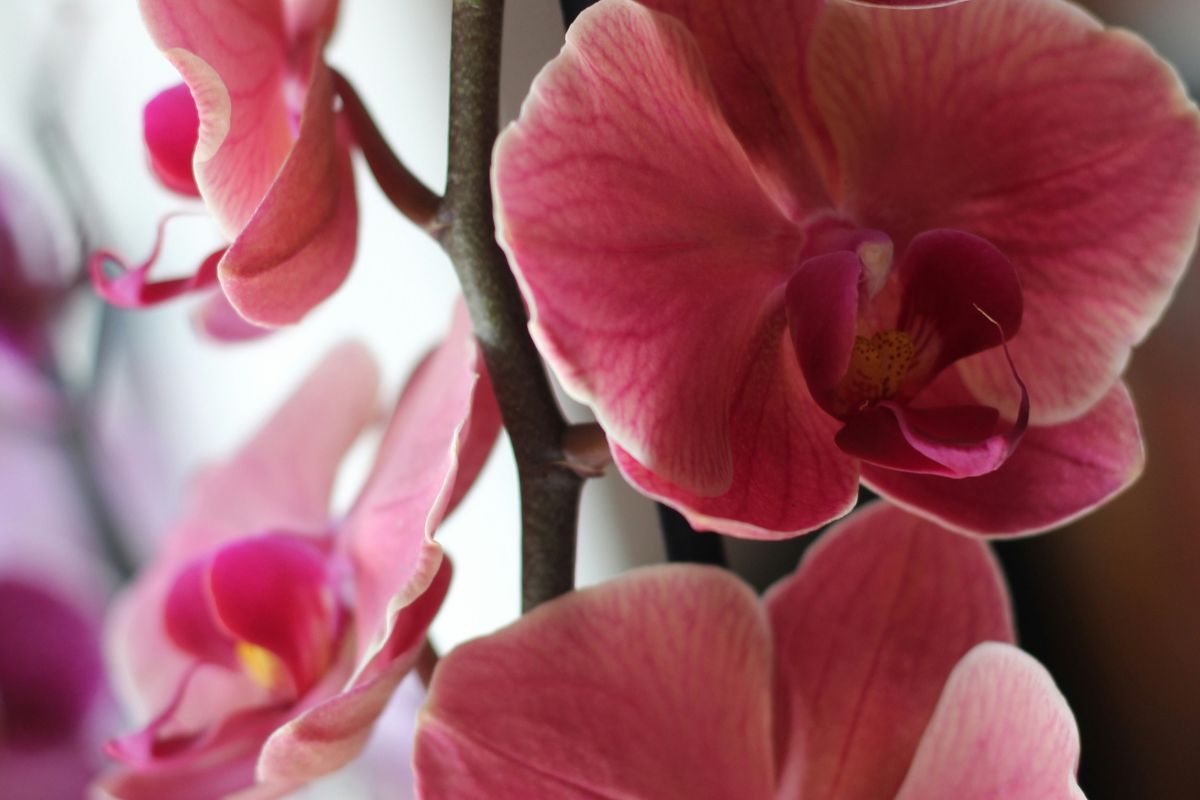Orchid Plant Benefits and Care Guide
Orchid Plant: Benefits and Care Guide
Orchids (family: Orchidaceae) are among the most stunning and diverse flowering plants in the world. Known for their exquisite beauty and elegance, orchids have become popular as ornamental plants in homes, offices, and gardens. Beyond their aesthetic appeal, orchids provide several benefits that can enhance your indoor environment. This article explores the benefits of orchids and offers essential care tips to help you keep these remarkable plants thriving.

Benefits of the Orchid Plant
Air Purification
Orchids are excellent air purifiers, making them a great addition to indoor spaces. Like many other plants, orchids absorb carbon dioxide and release oxygen during the process of photosynthesis. Furthermore, orchids help filter out harmful toxins such as formaldehyde and benzene, promoting a cleaner, healthier air environment.
- How It Works: Orchids have a large surface area on their leaves, which enables them to absorb more carbon dioxide and filter pollutants effectively. They continue releasing oxygen during the night, unlike many plants that stop the process after sunset.
Tip: Place orchids in high-traffic rooms or bedrooms to benefit from their air-purifying qualities.
Aesthetic Appeal
The beauty of orchids is hard to match. With their wide range of colors, shapes, and sizes, orchids can serve as a centerpiece in any room, offering an elegant and sophisticated touch to any decor. Whether displayed in a vase or as part of a larger plant collection, orchids stand out due to their delicate, exotic flowers.
- Design Tips: Combine orchids with minimalistic decor for a chic, modern look. Consider adding a decorative pot to enhance their visual appeal. Orchids also blend well with other plants for a dynamic display.
Stress Reduction and Mood Boost
Studies show that having plants like orchids indoors can reduce stress and improve overall mental health. Orchids create a calming and peaceful atmosphere, and the act of caring for them has therapeutic benefits that help alleviate anxiety and enhance mood.
- Why It Helps: Orchids bring a touch of nature indoors, fostering relaxation and connection with the natural world. The vibrant colors and delicate petals help uplift the spirit, reduce feelings of tension, and promote a sense of well-being.
Humidity Regulation
Orchids help maintain optimal indoor humidity levels by releasing moisture through a process known as transpiration. This can be particularly beneficial in dry indoor environments, especially during winter when heating systems tend to dry out the air.
- Benefits of Improved Humidity:
- Reduces skin dryness and irritation.
- Helps alleviate respiratory discomfort.
- Supports the health of other indoor plants by maintaining a balanced humidity level.
Tip: Group your orchids with other plants to create a microclimate that improves humidity levels further.
Noise Reduction
Although not a commonly discussed benefit, orchids can help reduce noise levels in indoor spaces. Their large, thick leaves naturally absorb sound, making orchids a great choice for reducing noise in busy households or office environments.
- Where to Place It: Orchids can be placed near windows to help absorb outdoor noise or in open-plan spaces to reduce echoes and improve indoor acoustics.
Improves Indoor Environment
By adding orchids to your space, you not only enhance the aesthetic appeal but also foster a more inviting and comfortable indoor environment. The presence of orchids can improve creativity and productivity, especially in workspaces or home offices.
- Benefits in Workspaces:
- Orchids can help improve focus and concentration.
- They create a dynamic and inspiring atmosphere that encourages creativity and well-being.

How to Care for Your Orchid Plant
Orchids are relatively low-maintenance plants, but they do require specific care to thrive. Below are essential care tips to ensure your orchid plant flourishes:
Light Requirements
Orchids thrive in bright, indirect sunlight. While they need light to bloom, direct sunlight can scorch their delicate leaves. They do well in well-lit areas, such as near windows with filtered light.
Tips:
Position your orchid by a window that faces east or west to ensure it gets the correct level of indirect light.
Turn the plant from time to time to promote uniform growth and prevent it from bending toward the light source.
Watering
Orchids prefer a consistent watering schedule, but they are sensitive to overwatering, which can lead to root rot. Most orchids need to be watered once a week, but this may vary depending on the type and environment.
Tips:
Water your orchid when the top 1-2 inches of soil feel dry to the touch.
Ensure your orchid’s pot has good drainage to prevent water from accumulating at the bottom.
Soil
Orchids thrive in soil that drains well, allowing their roots to receive proper airflow. They typically grow in orchid-specific potting mixes, which contain ingredients like bark, sphagnum moss, or perlite.
Recommendation: Use a specialized orchid mix to ensure proper drainage and aeration for the roots.
Temperature and Humidity
Orchids thrive in moderate to warm temperatures, typically between 65°F and 75°F (18°C to 24°C). They also appreciate higher humidity levels, ideally between 40% and 60%.
Tips:
Avoid placing orchids near drafts, air conditioners, or heaters, as extreme temperature fluctuations can stress the plant.
Increase humidity by placing the orchid on a humidity tray or by using a room humidifier.
Pruning and Cleaning
Regular pruning helps maintain the shape of the orchid and promotes better airflow. Cleaning the leaves with a damp cloth removes dust and prevents the buildup of debris, ensuring efficient photosynthesis.
Tips:
Use a soft cloth to gently wipe the leaves and remove dust.
Prune spent flowers and any dead or damaged leaves to encourage new growth. Pruning is best done after blooming or in early spring.
Repotting
Orchids should be repotted every 1-2 years or when they outgrow their pot. Repotting provides fresh soil, encourages healthy root growth, and ensures the plant has enough space to thrive.
Steps:
Carefully take the orchid out of its pot, ensuring that the roots are not harmed.
Place it in a new pot with fresh orchid mix, ensuring the plant is at the correct level.
Water thoroughly after repotting.
Conclusion
Orchids are much more than just beautiful flowers—they provide numerous benefits, including air purification, stress reduction, and improved indoor humidity. With proper care, orchids can thrive for many years, enhancing both the aesthetic appeal and overall environment of your home or workspace. Whether you're an experienced plant lover or a beginner, orchids are an excellent choice to enrich your living space with natural beauty and functional benefits.

